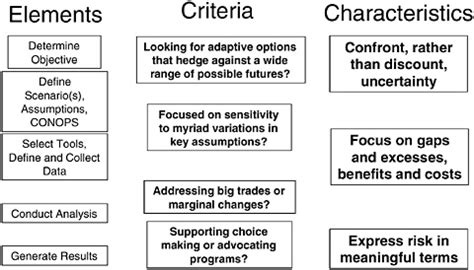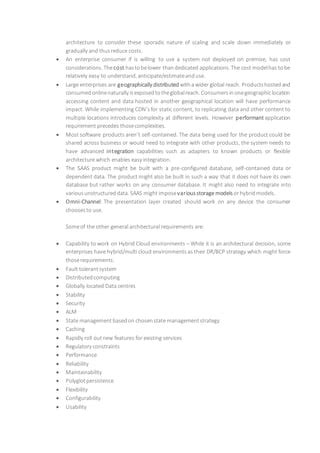Introduction: The Concept Precedes the Capability
The history of electronic devices is filled with visionary ideas that were ahead of their time. In many cases, the underlying concepts for groundbreaking electronic devices were conceived long before the necessary design and manufacturing capabilities existed to bring them to fruition. This was especially true in the early days of printed circuit board (PCB) technology, when the limitations of manual design and assembly processes often constrained the complexity and sophistication of electronic devices.
In this article, we will explore three notable examples of electronic devices whose core concepts preceded the PCB design capabilities of their era. These devices not only revolutionized their respective fields but also pushed the boundaries of what was possible with the available technology, paving the way for future innovations in PCB design and manufacturing.
Device 1: The Colossus Computer
The Concept: A Programmable Electronic Computer for Codebreaking
The Colossus computer was a groundbreaking electronic device developed by British codebreakers during World War II. Its primary purpose was to assist in the decryption of German military communications, which were encrypted using the Lorenz cipher.
The concept behind Colossus was a programmable electronic computer that could perform complex mathematical calculations at high speed. This was a revolutionary idea at the time, as most computing devices of the era were mechanical in nature and had limited programmability.
The Challenge: Limitations of PCB Technology in the 1940s
The development of Colossus was a massive undertaking, given the limitations of PCB technology in the 1940s. At the time, PCBs were still a relatively new invention, and the design and manufacturing processes were largely manual and time-consuming.
The Colossus designers faced several challenges, including:
- Limited availability of electronic components
- Lack of standardization in component sizes and specifications
- Manual design and assembly processes
- Rudimentary testing and debugging tools
Despite these limitations, the Colossus team managed to create a machine that was far ahead of its time. The final design consisted of over 1,600 vacuum tubes and numerous other electronic components, all interconnected using a complex network of wires and plugboards.
The Impact: A Milestone in Computing History
The Colossus computer played a crucial role in the Allied war effort, helping to decrypt German communications and provide valuable intelligence to military commanders. Its success also had far-reaching implications for the field of computing, demonstrating the potential of programmable electronic devices and paving the way for future innovations.
| Specification | Colossus Computer |
|---|---|
| Number of Vacuum Tubes | 1,600+ |
| Speed | 5,000 characters per second |
| Programming Method | Plugboards and switches |
| Purpose | Codebreaking (Lorenz cipher) |

Device 2: The Altair 8800
The Concept: An Affordable Personal Computer for Hobbyists
The Altair 8800, released in 1975, is widely considered to be the first personal computer. Its concept was to provide an affordable, expandable computing platform for hobbyists and enthusiasts.
The Altair 8800 was based on the Intel 8080 microprocessor and featured a modular design that allowed users to add memory, input/output devices, and other peripherals as needed. This concept of an open, customizable computing platform was revolutionary at the time and set the stage for the personal computer revolution of the 1980s.
The Challenge: PCB Design and Manufacturing in the 1970s
While PCB technology had advanced significantly since the days of Colossus, designing and manufacturing a complex device like the Altair 8800 still presented numerous challenges in the 1970s.
Some of the key challenges included:
- Limited CAD tools for PCB design
- Manual assembly and soldering processes
- Inconsistent quality of electronic components
- Rudimentary testing and debugging equipment
Despite these limitations, the Altair 8800 was a remarkable achievement. Its modular design and expandability allowed users to create highly customized systems, while its affordable price point made it accessible to a wide audience.
The Impact: Sparking the Personal Computer Revolution
The Altair 8800 had a profound impact on the computing industry, inspiring a generation of entrepreneurs and innovators. Its open architecture and expandability encouraged the development of third-party hardware and software, fostering a vibrant ecosystem of products and services.
Many of the key figures in the personal computer revolution, including Bill Gates and Paul Allen (founders of Microsoft), and Steve Wozniak (co-founder of Apple), got their start working with the Altair 8800. The device’s success also helped to establish microcomputers as a viable market, paving the way for the explosive growth of the personal computer industry in the 1980s and beyond.
| Specification | Altair 8800 |
|---|---|
| Processor | Intel 8080 @ 2 MHz |
| Memory | 256 bytes (expandable) |
| Input/Output | Front panel switches and LEDs |
| Storage | Paper tape, cassette tape |
| Price | $439 (kit), $621 (assembled) |

Device 3: The Apple II
The Concept: A Complete, Ready-to-Use Personal Computer
The Apple II, released in 1977, built upon the concept of the Altair 8800 but took it a step further. While the Altair was primarily targeted at hobbyists and required significant assembly and configuration, the Apple II was designed to be a complete, ready-to-use personal computer for a broader audience.
The Apple II featured a sleek, integrated design that included a keyboard, power supply, and case. It also offered built-in support for a color display, sound, and expansion slots for additional peripherals. This concept of a self-contained, user-friendly personal computer set the standard for the industry and helped to make computing accessible to a wider audience.
The Challenge: Advancing PCB Design and Manufacturing
The development of the Apple II benefited from advancements in PCB design and manufacturing technology in the late 1970s. However, creating a complex, integrated system like the Apple II still presented significant challenges.
Some of the key challenges included:
- Integrating multiple subsystems (processor, memory, I/O, etc.) on a single PCB
- Ensuring proper signal integrity and power distribution
- Minimizing electromagnetic interference (EMI) and radio frequency interference (RFI)
- Developing efficient manufacturing and assembly processes
The Apple II team, led by Steve Wozniak, overcame these challenges through innovative PCB design techniques and close collaboration with manufacturing partners. The result was a highly integrated, reliable system that set a new standard for personal computers.
The Impact: Defining the Personal Computer Era
The Apple II was a massive success, selling over 5 million units during its lifetime. Its impact on the personal computer industry cannot be overstated, as it helped to define the core features and capabilities of personal computers for years to come.
The Apple II’s success also established Apple as a major player in the computing industry and set the stage for future innovations, such as the Macintosh and the iPhone. Its legacy continues to inspire designers and engineers, who strive to create user-friendly, integrated electronic devices that push the boundaries of what is possible.
| Specification | Apple II |
|---|---|
| Processor | MOS Technology 6502 @ 1 MHz |
| Memory | 4 KB (expandable to 48 KB) |
| Display | 40×24 text, 280×192 graphics (6 colors) |
| Sound | 1-bit speaker |
| Storage | Cassette tape, 5.25″ floppy disk |
| Price | $1,298 (4 KB), $2,638 (48 KB) |

FAQ
1. What role did PCB technology play in the development of early electronic devices?
PCB technology was crucial in the development of early electronic devices, as it provided a means to interconnect and organize complex networks of electronic components. However, the limitations of PCB design and manufacturing processes often constrained the complexity and sophistication of these devices, requiring innovators to find creative solutions to overcome these challenges.
2. How did the Colossus computer overcome the limitations of 1940s PCB technology?
The Colossus designers overcame the limitations of 1940s PCB technology through a combination of innovative design techniques and manual assembly processes. They used a complex network of wires and plugboards to interconnect the various electronic components, and developed custom testing and debugging procedures to ensure the reliability of the system.
3. What impact did the Altair 8800 have on the personal computer industry?
The Altair 8800 had a profound impact on the personal computer industry, inspiring a generation of entrepreneurs and innovators. Its open architecture and expandability encouraged the development of third-party hardware and software, fostering a vibrant ecosystem of products and services. Many of the key figures in the personal computer revolution, including Bill Gates, Paul Allen, and Steve Wozniak, got their start working with the Altair 8800.
4. How did the Apple II differ from the Altair 8800 in terms of its concept and target audience?
While the Altair 8800 was primarily targeted at hobbyists and required significant assembly and configuration, the Apple II was designed to be a complete, ready-to-use personal computer for a broader audience. The Apple II featured a sleek, integrated design that included a keyboard, power supply, and case, as well as built-in support for a color display, sound, and expansion slots for additional peripherals.
5. What challenges did the Apple II team face in terms of PCB design and manufacturing, and how did they overcome them?
The Apple II team faced challenges such as integrating multiple subsystems on a single PCB, ensuring proper signal integrity and power distribution, minimizing electromagnetic and radio frequency interference, and developing efficient manufacturing and assembly processes. They overcame these challenges through innovative PCB design techniques and close collaboration with manufacturing partners, resulting in a highly integrated, reliable system that set a new standard for personal computers.
Conclusion: The Legacy of Concept-Driven Innovation
The Colossus computer, Altair 8800, and Apple II serve as powerful examples of how visionary concepts can drive the development of groundbreaking electronic devices, even in the face of technological limitations. In each case, the designers and engineers behind these devices pushed the boundaries of what was possible with the available PCB technology, finding innovative solutions to overcome the challenges they faced.
The legacy of these devices extends far beyond their immediate impact, as they helped to shape the course of the computing industry and inspire future generations of innovators. Today, as PCB technology continues to advance at a rapid pace, it is important to remember the lessons learned from these early pioneers and continue to push the boundaries of what is possible.
By embracing a concept-driven approach to innovation, designers and engineers can create electronic devices that not only solve current problems but also anticipate future needs and opportunities. As we look to the future of the electronics industry, it is clear that the spirit of innovation embodied by the Colossus, Altair 8800, and Apple II will continue to drive progress and shape the world around us.

No responses yet